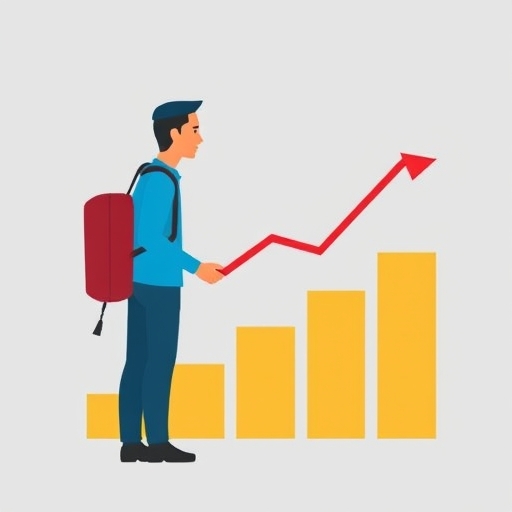Does Unemployment Rate Count College Students?
Understanding the unemployment rate is crucial for grasping the economic health of a nation. One common question that arises is whether or not college students are counted in this statistic. In this article, we will explore how the unemployment rate is calculated, the status of college students within this metric, and the broader implications for both the economy and the students themselves.
What is the Unemployment Rate?
Definition
The unemployment rate is a measure of the percentage of the labor force that is unemployed and actively seeking employment. It is a key indicator used by economists and policymakers to gauge the economic health of a country.
How is it Calculated?
The unemployment rate is calculated using the following formula:
[ text{Unemployment Rate} = left( frac{text{Number of Unemployed}}{text{Labor Force}} right) times 100 ]
- Number of Unemployed: This includes individuals who are without a job, have actively sought work in the past four weeks, and are available to work.
- Labor Force: This comprises all employed and unemployed individuals over the age of 16 who are not institutionalized (e.g., in military or correctional facilities).
- Employed College Students: If college students are working part-time or full-time jobs while studying, they are counted as employed in the labor force.
- Unemployed College Students: If college students graduate and actively seek employment but are currently without a job, they are counted as unemployed.
- Students Not Actively Seeking Work: If college students are not looking for work (for example, if they are enrolled full-time and not seeking employment), they are not included in the unemployment rate.
- College students who work while studying contribute to the employment statistics.
- Graduating college students entering the workforce are counted as unemployed if they are job hunting.
- Those who are not actively seeking work are excluded from both the employment and unemployment figures.
- Job Market Competition: A high unemployment rate indicates a saturated job market, making it more difficult for new graduates to find employment.
- Wage Pressure: When unemployment is high, employers have more candidates to choose from, often leading to lower wages.
- Debt Impact: Many college students graduate with significant student loan debt, and high unemployment rates can delay their ability to repay these loans.
- Anxiety: The pressure of finding a job can lead to increased anxiety levels.
- Depression: Prolonged unemployment can lead to feelings of hopelessness and depression.
- Impact on Future Choices: Unemployment may lead students to make career choices based on immediate job availability rather than long-term career satisfaction.
- Internships: Engaging in internships can improve employability and reduce unemployment risk.
- Networking: Building professional relationships can lead to job opportunities.
- Skill Development: Acquiring skills relevant to the job market can enhance job prospects.
- Education Funding: Investing in education can help reduce student debt and improve job readiness.
- Job Creation Programs: Initiatives aimed at creating jobs can significantly impact unemployment rates for new graduates.
- Workforce Development: Programs that align education with industry needs can help reduce unemployment among recent graduates.
The Role of College Students in the Unemployment Rate
Are College Students Counted?
The answer to whether college students are counted in the unemployment rate depends on their employment status:
Key Points to Consider
The Impact of Unemployment on College Students
Economic Implications
The unemployment rate has significant implications for college students, particularly those graduating into a challenging job market. The following factors highlight this impact:
Psychological Effects
The stress of unemployment can have psychological effects on college students, including:
Comparison: College Students vs. Non-College Graduates
To better understand how the unemployment rate affects different demographics, it’s useful to compare college students with non-college graduates. The table below outlines some key differences.
| Factor | College Students | Non-College Graduates |
|---|---|---|
| Employment Status | Often part-time, internships | Varied, often full-time or part-time |
| Unemployment Rate | Higher for recent graduates | Generally lower for skilled trades |
| Job Market Competition | High due to degree holders | Varies by industry |
| Wage Expectations | Higher due to degree | Varies, often lower |
| Debt Levels | Typically higher | Generally lower |
Why Understanding This Matters
For Students
Understanding how the unemployment rate affects them can help college students make informed decisions regarding their education and career paths. Here are some considerations:
For Policymakers
Policymakers must understand the unemployment rate’s implications for college students to create effective economic policies. Key areas of focus might include:
FAQs
1. Are part-time college students counted in the unemployment rate?
Yes, part-time college students who are actively seeking work are counted in the unemployment statistics if they are not currently employed.
2. Do college graduates face higher unemployment rates than non-graduates?
Often, recent college graduates face higher unemployment rates compared to the general population, particularly in economic downturns.
3. How does the unemployment rate affect future job prospects for college students?
A high unemployment rate can lead to increased competition for jobs, potentially delaying employment opportunities for recent graduates.
4. What can college students do to improve their chances of employment after graduation?
Students can enhance their employability by gaining work experience through internships, networking, and developing skills that are in high demand in their chosen industries.
Conclusion
The relationship between college students and the unemployment rate is complex. While college students can be counted in both employment and unemployment statistics, their status often depends on their engagement in the job market. Understanding this relationship is essential for students navigating their education and career paths, as well as for policymakers aiming to improve economic conditions. By recognizing the nuances of the unemployment rate, all stakeholders can work towards creating a more favorable job market for recent graduates.
In summary, the unemployment rate does account for college students under certain conditions, and its implications extend far beyond mere statistics, influencing the future of the workforce and the economy as a whole.





